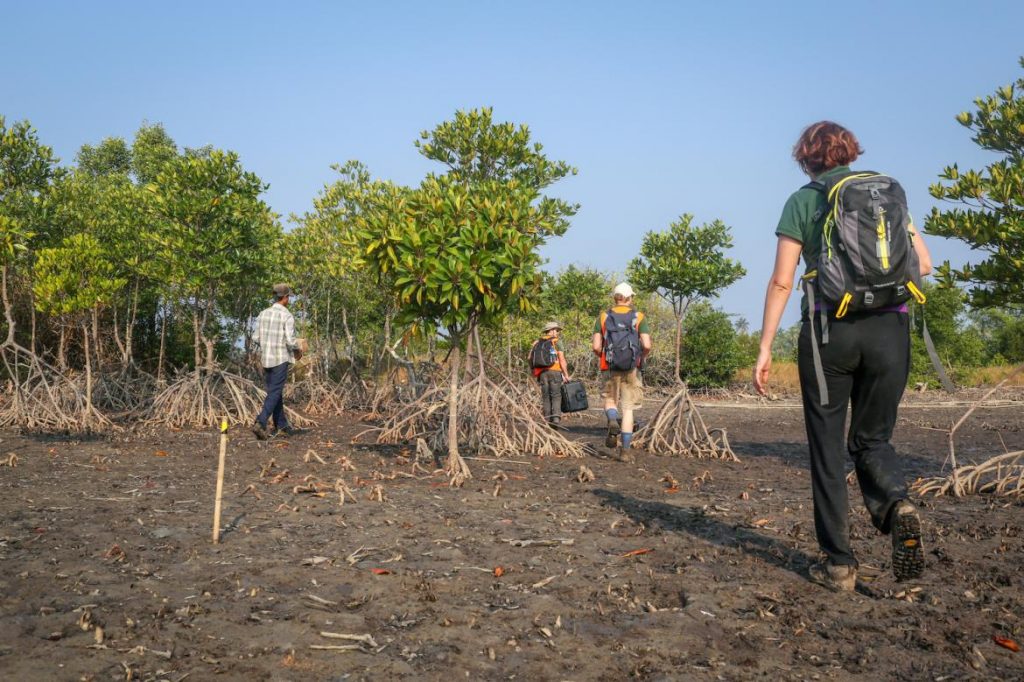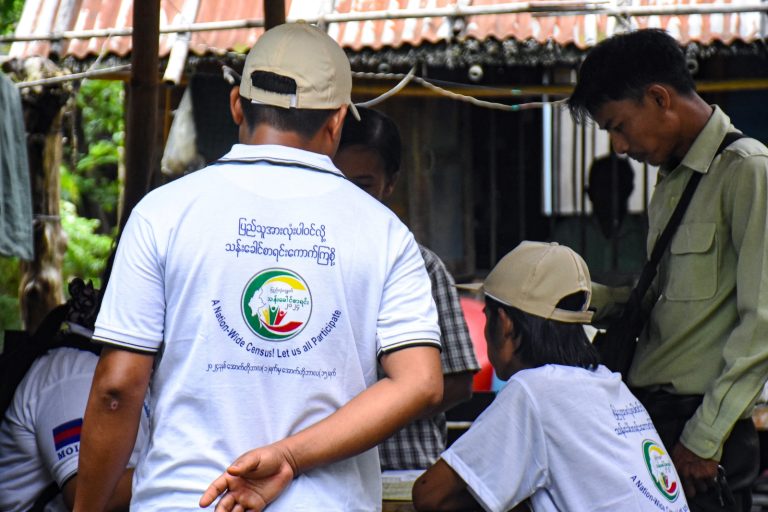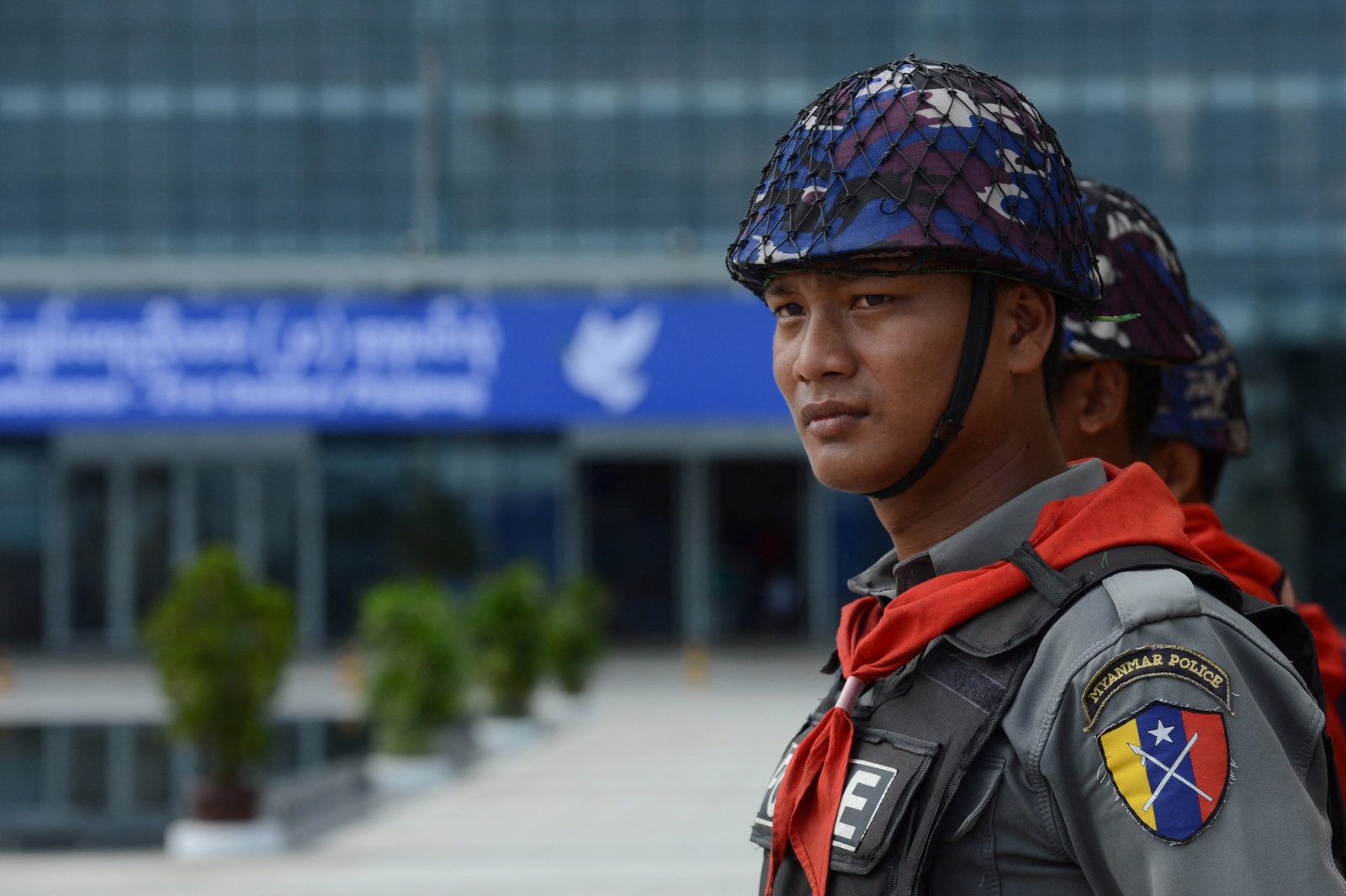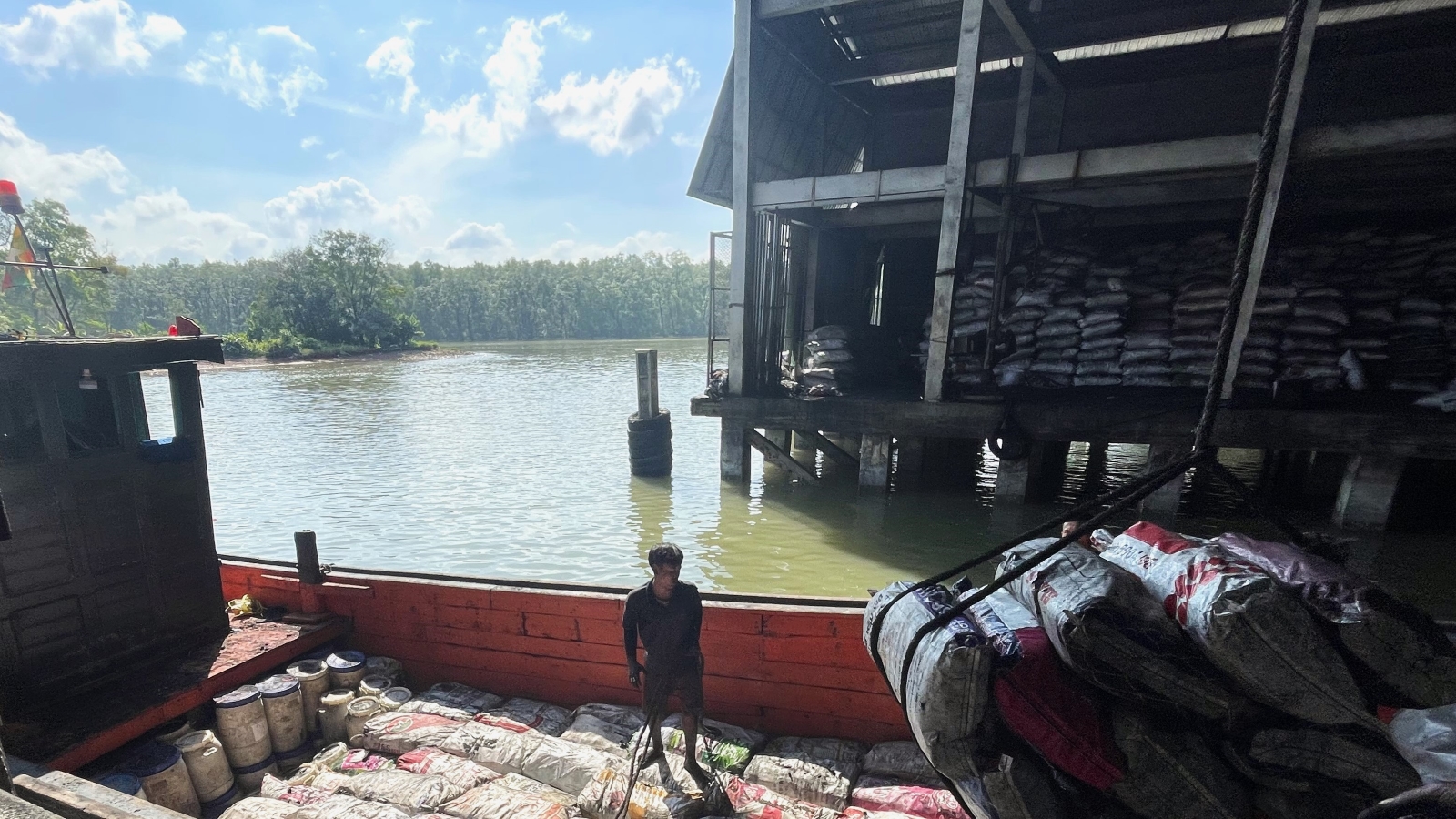Drones and blockchain technology are benefitting the mangrove restoration activities in Ayeyarwady Region of a non-profit organisation whose founder has a connection to a pioneering “exile media” broadcaster.
By KATRIN SCHREGENBERGER | FRONTIER
IN WHAT MAY be a first for Myanmar, a drone was used in a reforestation project to plant mangroves at the Thor Heyerdahl Climate Park near Chaung Tha beach in Ayeyarwady Region on February 10.
The specially designed drone, which fired seedpods into the soil at high speed, took only an hour of flight time to plant more than 2,000 mangroves in an area covering about 1.25 acres (0.5 hectares). It would take a worker a day to plant that many seeds.
The high-tech planting exercise beside the Bay of Bengal was the latest step forward for a reforestation project being undertaken by Worldview International Foundation, which established the park on 1,800 acres (about 730 hectares) in 2012 in partnership with Pathein University on university land.
“Now we will scale up,” said Dr Arne Fjørtoft, the Norwegian founder and general secretary of WIF, which has offices in Yangon and Sri Lanka.
Support more independent journalism like this. Sign up to be a Frontier member.
The drone is worth about US$50,000 (about K66.8 million) and was developed for WIF by BioCarbon Engineering, a company based in Oxford, Britain. BioCarbon had used drones to plant trees on land in Australia and Britain but had to modify the planting technique for the tidal environment in which mangroves grow.
Another important advance for the project in February was the mapping of about 1,200 acres (500ha) of the park, also by drone. The exercise produced maps with a resolution down to three centimetres using data that can be converted into 3D images.
As well as recording each mangrove to monitor its growth, the drone also measured the level of carbon dioxide in the air.
“The local people were eager to get these maps because even they themselves did not know what they have on their land,” Fjørtoft told Frontier.
Data gathered during the mapping exercise was used to set the flight pattern used by the planting drone.
“Drones can make parts of the planting much more effective,” Fjørtoft said.
There are more than 3.5 million planted and established mangrove trees in the Thor Heyerdahl Climate Park, named after the Norwegian adventurer famous for sailing a hand-built raft across the Pacific Ocean in 1947 before later co-founding WIF.
The success of the reforestation project has resulted in requests from five nearby communities for help to restore mangroves on 6,000 acres. WIF has also been given responsibility by the Ministry of Natural Resources and Environmental Conservation to restore another 8,000 acres in Ayeyarwady Region under a project launched in 2016 with the planting of 400,000 trees. Elsewhere in Ayeyarwady, WIF is planning to establish two new reforestation areas on 4,200 acres.
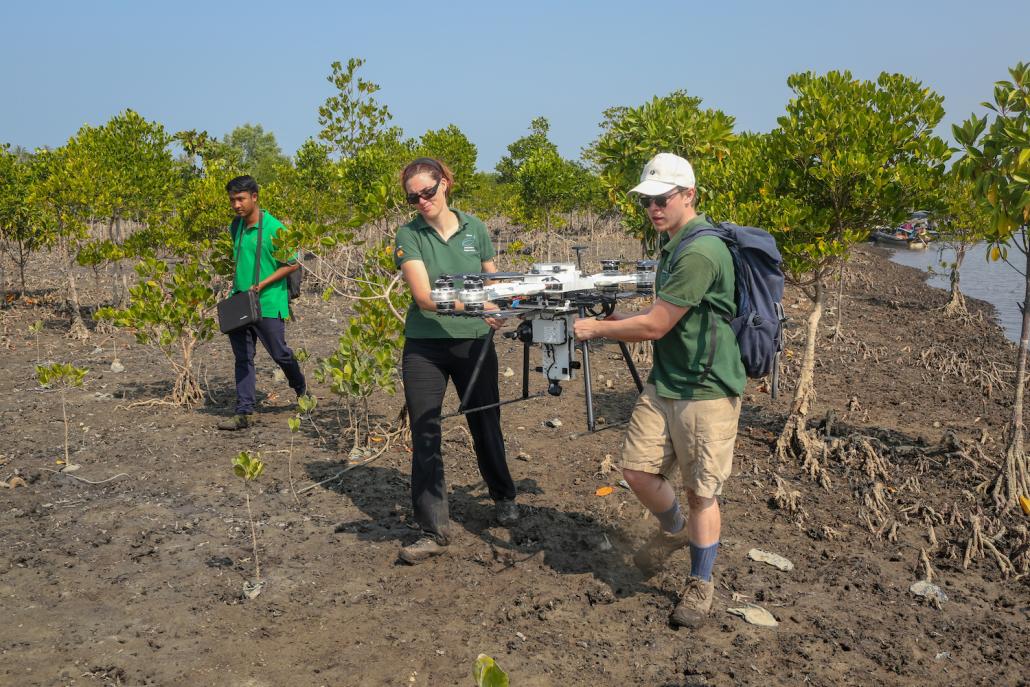
Victoria Milko | Frontier
Mangrove reforestation is also on the agenda in Yangon Region, with Fjørtoft saying that Chief Minister U Phyo Min Thein had agreed to replant up to 55,000 acres (22,000 hectares) this year. Speaking at a BioCarbon Engineering drone planting demonstration at the National Races Village on February 7, the chief minister said the regional government was seeking land for mangrove reforestation in the eastern and southeastern townships of Kayan, Thongwa and Kyauktan.
Drones offered great opportunities for reforestation, said Mr Erik Solheim, executive director of the United Nations Environment Programme, who travelled from its headquarters in Nairobi to attend the February 7 demonstration.
“Drones are so far used mainly to attack terrorists in different parts of the world, but if we use drones for planting we can increase the scale, hopefully,” he said.
Fjørtoft, who turns 81 on March 28, is a former journalist, broadcaster and politician who has a long connection to Myanmar: He played a key role in establishing Democratic Voice of Burma in Oslo in 1992 with a group of Myanmar political exiles.
WIF became involved in mangrove reforestation in 2012, the year after the transition to democracy began under the Union Solidarity and Development Party government, at the request of U Win Tun, who was then the minister for environmental conservation and forestry.
“The government asked us to help to speed up the planting process,” Fjørtoft said, adding that many earlier reforestation efforts had failed because of low survival rates. “A lot of newly-planted trees were gone after a few years.”
Planting and nurturing mangroves is challenging. In 2012, WIF began three years of research on mangrove restoration in cooperation with Pathein University and Myeik University, and with soil testing and laboratory support from Yangon University.
As well as yielding invaluable knowledge about growing conditions, the research also showed how to protect mangrove seedlings from crabs.
The research found that 14 of the 32 known varieties of mangrove in Myanmar grow in the climate park, said its project manager, U Win Maung, who has 30 years’ experience in mangrove reforestation. A mangrove gene bank has also been established.
“When we started looking into the trees we were amazed by its capacities,” Fjørtoft said. Mangroves were the most effective of any tree in mitigating carbon dioxide in the environment – they can sequester, or store, up to five times more carbon than normal trees – highlighting their potential for combating global warming. Mangroves also had a cooling effect on the environment. “One tree is equal to three normal size air-conditioners,” he added.
One of the main benefits of mangrove forests is that they create habitats in which marine animals can shelter and breed. “If there are mangroves, there is about 50 percent more seafood,” Fjørtoft said.
The other well-known advantage of mangroves is serving as a natural shield to protect coastal areas from storms and tsunamis and to prevent coastal erosion.
In 2008, the Ayeyarwady delta was devastated by Cyclone Nargis, the worst recorded natural disaster in Myanmar’s history. At least 138,000 people were killed when a massive storm surge swept ashore.
“In areas with mangroves, most of the people survived,” said Fjørtoft
The biggest threat to mangroves is humans. In Ayeyarwady, where vast areas were cleared for shrimp farms or growing rice, more than 80 percent of the original mangrove forests have been destroyed.
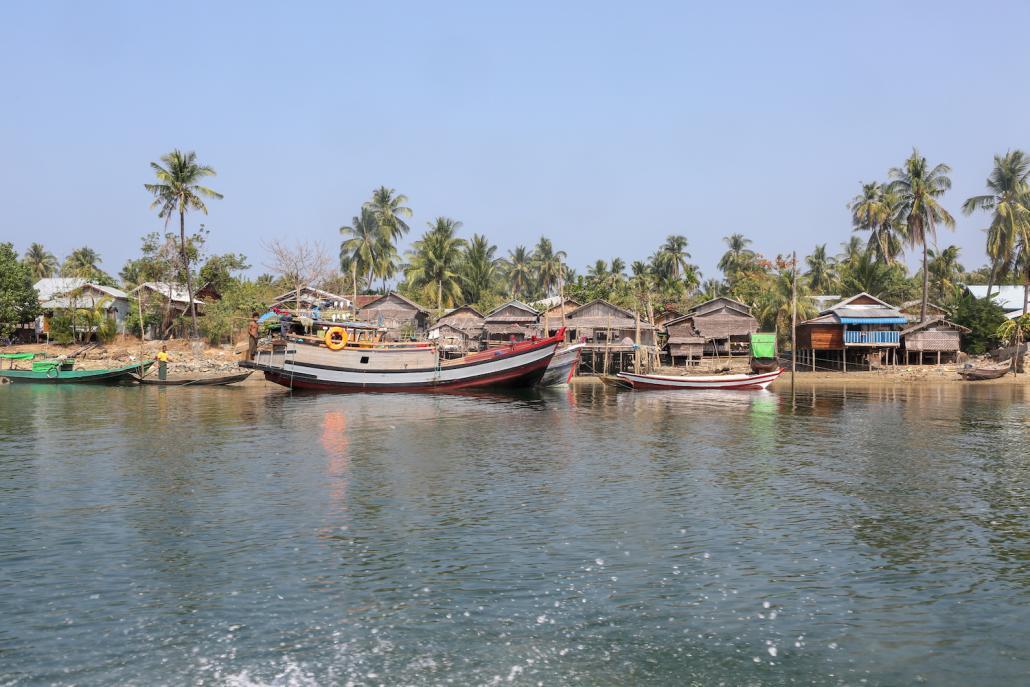
Victoria Milko | Frontier
Another big threat to mangroves is chopping them down to make charcoal, which is a delicate issue because it involves livelihoods.
“The key problem were the charcoal burners; they used to cut the wood to produce charcoal and send it to Yangon,” said Win Maung.
Villagers were also illegally felling the trees to make charcoal for local sale.
Fjørtoft said it was critical to involve local communities in mangrove reforestation and a failure to do so had been the biggest mistake of earlier replanting projects.
“If you don’t bring in the communities they will cut the trees as they are very poor,” he said. Raising the living standards of local communities was the “best insurance” against cutting trees, he added.
“In the beginning it was hard to convince the people because they were not aware” of the benefits of preserving and restoring mangrove forests, Fjørtoft recalled.
When the project was launched, WIF invited charcoal burners to be involved in planting. They were paid K5,000 a day, about K2,000 more than their daily income from charcoal burning.
The project also created interest in nearby communities, including Thabawkan village. It was one of the five communities that sought help from WIF for its own replanting project.
U Chit San, 34, the head of the village of 475 households, recalled as a boy seeing how mangroves provided breeding areas for fish in areas long since cleared of trees.
“If we plant mangroves the fish and crabs will come back,” said U Chit San, 34, the head of the village of 475 households, explaining why he had taken the initiative to approach WIF for assistance.
But Chit San said there was resistance from about 10 percent of village residents to the idea of replanting mangroves. They wanted to establish a shrimp farm instead, he said.
He continues to try to persuade charcoal burners not to illegally fell trees and to work on the replanting project.
Thabawkan has a nursery for about 650,000 mangrove seedlings and the community has begun clearing land for replanting. It plans to restore about 1,000 acres (400ha) this year, another 1,000 acres next year and about 620 acres (250ha) in 2020.
A combination of close cooperation with communities and knowledge gained from the research project has enabled WIF to achieve an impressively high survival rate of 85 percent of planted trees. This is much higher than the expected survival rate from mangroves planted by drones, which BioCarbon says is about 50 percent. The monitoring of the newly planted trees and evaluation of drone planting will end this year.
BioCarbon Engineering says planting by drones in Myanmar is at least half the cost of planting by hand. However, drones will not do all of the planting because that would conflict with WIF’s objective of supporting community development, which is regarded as essential for encouraging communities to take responsibility for the trees.
“Our first duty is to give people jobs,” Fjørtoft said.
Protecting the mangroves from destruction is a key challenge. Apart from locals cutting the trees illegally, investors have shown interest in developing resort hotels in the area and have even tried to seize land from the park. The land grab was thwarted when Pathein University complained to the regional government.
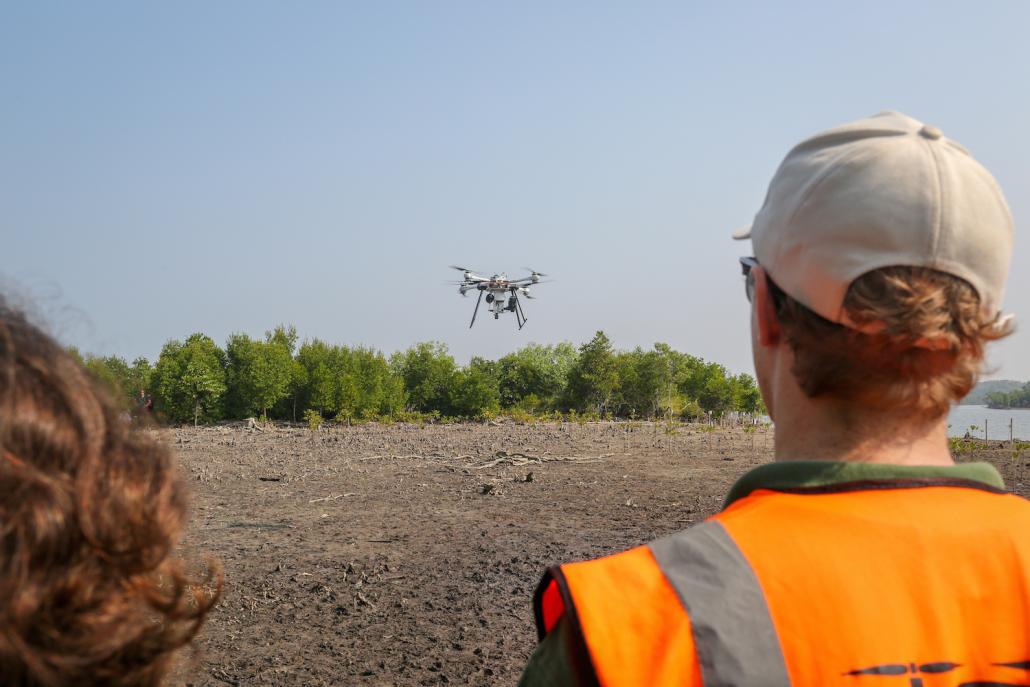
Victoria Milko | Frontier
Another challenge is funding, which WIF has addressed through the use of blockchain technology.
“We started issuing our own crypto-currency; for one dollar you buy one tree and you get crypto-currency,” said Fjørtoft.
The crypto-currency, Heyerdahl Climate Pioneers, represents a living mangrove and carbon credit rights and enabled WIF to finance the planting of one million trees last year.
“In 20 years, a mangrove tree mitigates one tonne of carbon; that means that 200 trees sequester about the same amount of carbon as a European emits every year,” said Mr Alan Laubsch, natural capital markets director of Lykke Exchange, a Swiss company that specialises in crypto-currencies and has partnered with WIF.
Investors who buy a tree receive 500 kilograms of carbon credits over 20 years, or 25kg a year, which can be resold. “There is potential for the currency to appreciate in value as we have seen for other successful crypto-currencies like Bitcoin or Ethereum,” Laubsch told Frontier.
WIF allocates 50 percent of the carbon credit sales and 15 percent of the currency to the communities with which it works, so they can benefit from the sales and the future appreciation of the crypto-currency.
Fjørtoft hopes that the crypto-currency move will ensure that trees have lasting value.
“A living tree is worth much more than a dead one,” he said.
Before drones, democracy
Although government officials in Myanmar have opened their arms to Dr Arne Fjørtoft and Worldview International Foundation in recent years, that wasn’t always the case.
In fact, more than 25 years ago he helped to set up an exile media organisation, Democratic Voice of Burma, in partnership with the foreign ministry of Norway. The broadcaster was a staunch supporter of the pro-democracy movement and quickly became the military junta’s bête noire. It was particularly influential around the time of the September 2007 protests and until August 2011 Myanmar state media accused DVB of producing “killer broadcasts designed to cause troubles”.
Fjørtoft’s passion for radio began when he first heard one as a boy during World War II. The “heavy” punishments meted out to those possessing a radio reinforced the power of the medium to the young Fjørtoft.
He later worked for the Norwegian Broadcasting Corporation from 1964 to 1985, during which he spent many years broadcasting from Thailand. In 1979 he founded Worldview International Foundation, based in Colombo, Sri Lanka.
When U Sein Win, the leader of Myanmar’s government in exile that was formed after the junta ignored the results of the 1990 election, approached the foreign ministry of Norway for help, he was directed to Fjørtoft and WIF. The organisation had experience helping to set up radio and television stations in other countries. “We were asked by the exiled prime minister if we could help to start a radio programme,” Fjørtoft told Frontier.
“First he suggested that people would walk through the jungle with sending transmitters on their back to reach the people,” he recalled. “But [if it was done] like that it would have been very easy for the government to spot them and shoot them.”
Fjørtoft instead proposed a short wave radio station based in Norway. He trained political exiles to report and produce the programmes and DVB began radio broadcasts in July 1992.The broadcasts sought to subvert the military junta’s grip on the media by delivering uncensored news to people in Myanmar; those caught listening to DVB could be sent to prison. Fjørtoft said he believed the broadcaster was “extremely effective in the efforts to introduce democracy because all the other channels where completely closed”.
And then Myanmar’s reforms began. In 2012 DVB opened an office in Yangon at the invitation of the U Thein Sein government. WIF is no longer involved. “They are still doing a great job,” Fjørtoft said. “It is not easy to transform to a competitive environment.”
WIF, which had been blacklisted for many years because of its links to DVB, was also able to set up in Myanmar in 2012.
Fjørtoft said WIF today has a good relationship with the government – something he could never have imagined back in the ’90s. “As long as you are on the right side [of the government],” he said, “there is no problem.”


